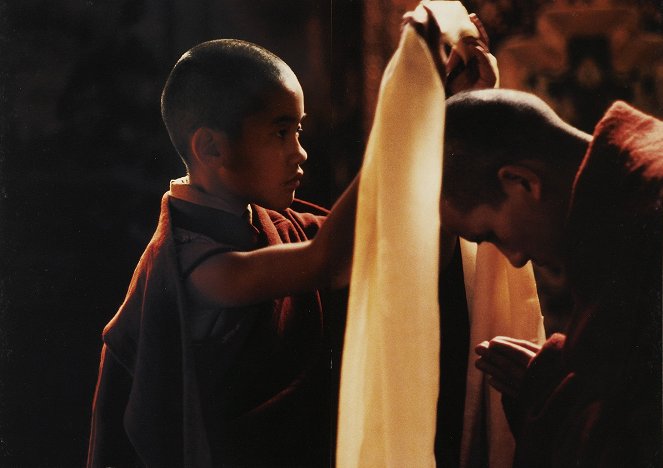Ohjaus:
Martin ScorseseKäsikirjoitus:
Melissa MathisonKuvaus:
Roger DeakinsSävellys:
Philip GlassNäyttelijät:
Tenzin Thuthob Tsarong, Gyurme Tethong, Tulku Jamyang Kunga Tenzin, Tenzin Yeshi Paichang, Tencho Gyalpo, Tenzin Topjar (lisää)Juonikuvaukset(1)
Vuonna 1937 vaatimattomissa oloissa elävän perheen 2-vuotias poika tunnistetaan Kunduniksi, Dalai Laman 14. reinkarnaatioksi ja Tiibetin henkiseksi ja poliittiseksi johtajaksi. Potala Palacessa munkkien parissa varttuva Dalai Lama päättää tuoda nykyajan eristyksissä olevaan kotimaahansa, mutta vuonna 1950 kiinalaiset hyökkäävät Tiibetiin. Vasta 15-vuotiaasta Dalai Lamasta tulee Tiibetin virallinen johtaja. Hän vastustaa miehitystä ja onnistuu myöhemmin rohkeassa paossaan Intiaan. Sieltä käsin hän kertoo koko maailmalle kotimaansa ahdingosta. (Soulmedia Fin.)
(lisää)Videot (1)
Arvostelut (3)
Beautifully and sensitively shot, much deeper in thought and information than Seven Years in Tibet, and with perfect cinematography. The Chinese government filed an official protest against it, and I don't think this film could have asked for a better accolade.
()
Scorsese adapted the pace of the film to life in Tibet. The pace is incredibly slow, which can discourage many people. On the other hand, it is beneficial for conveying the message. Even when the Chinese army arrives, the pace does not change. It's as if Scorsese is trying his best to convey the Buddhist philosophy to the audience, which seems to be unaware of evil or accepting it without acting upon it. The film portrays the difference between how peaceful and gentle the world can be and how cruel and hostile it can become. The Dalai Lama is such an interesting character that even his childhood can keep the audience engaged in the film. Unfortunately, just like the slow pace, the overall tone of the film is also similar. It's as if nothing can be done, things will simply be as they are.
()
I don't like to link to someone else’s review, but Lima really nailed it this time. :-) Otherwise, as for my opinion, I can't but praise. Scorsese is a master filmmaker who could have sensitively and engagingly filmed perhaps Saddam Hussain's childhood, and the soundtrack by Philip Glass is simply phenomenal. And most importantly, the film is utterly engrossing, fully narrating a historical stage in the span of some twelve years without exceeding the two-hour runtime – call it what you will, but I call it art. 90%
()
Kuvagalleria (10)
Kuva © 1998 Touchstone Pictures



Mainos